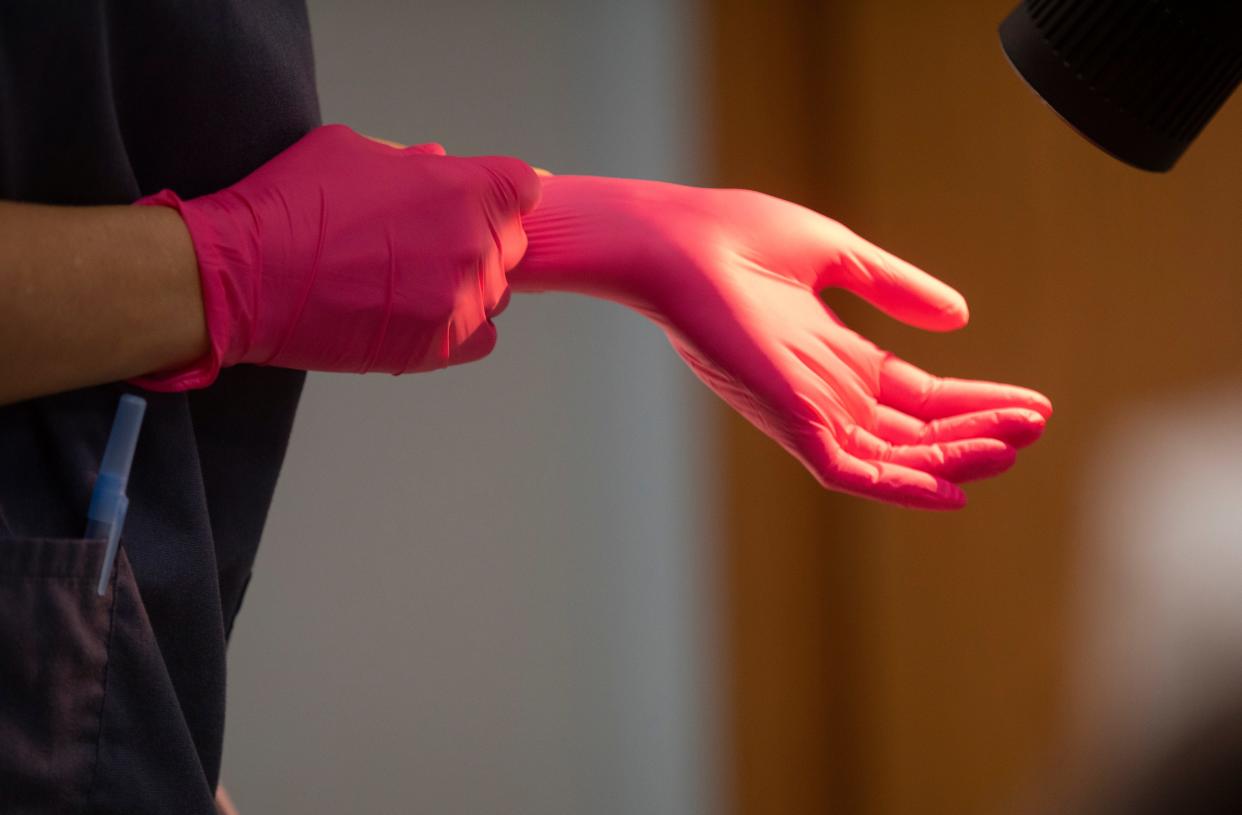Abortions dropped 65% in Ohio following overturn of Roe v. Wade

Abortions in Ohio dropped by 65% in the months after the U.S. Supreme Court overturned Roe v. Wade and the state imposed a six-week abortion ban, according to a new report.
The numbers show how access to abortion declined dramatically because of Ohio's ban on doctors performing abortions after cardiac activity − a 2019 law that Republican leaders implemented hours after the U.S. Supreme Court's ruling in June.
About 2,470 fewer people obtained abortions in Ohio following those restrictions, according to #WeCount, a national reporting effort sponsored by the Society of Family Planning. The number of abortions performed in Ohio dropped from 1,950 in April − before the U.S. Supreme Court ruling on June 24 − to 680 in August, the report found.
Nationwide, 10,670 fewer people had abortions in July and August compared to April. That amounted to a 6% decrease in abortions between April and August, the report estimated.
‘They’re not gonna quit’: How Ohio anti-abortion activists shaped post-Roe America
But the national picture was divided into states with restrictions on abortions and states without. By August, abortion was completely unavailable in 10 states, including Kentucky.
Nearly 22,000 fewer abortions were performed in states, such as Ohio, with limits on the procedure over the summer. Those numbers were partially offset by an increase of more than 11,000 abortions in other states.
Ohio saw one of biggest declines in abortions in U.S.
Ohio had one of the largest declines among states that retained any abortion access.
"One of the things that stands out the most is how big this number is," said Alison Norris, an Ohio State University associate professor and co-chair on the WeCount project. "Those numbers represent some person and some family who is having their whole situation disrupted."
The numbers confirm what Ohio abortion clinics already knew anecdotally. Dr. Sharon Liner, medical director for Planned Parenthood of Southwest Ohio, estimated that 60% of clients were turned away after their initial ultrasounds, according to a court affidavit.
"Our patients have been devastated when we have informed them that Senate Bill 23 has taken effect and we cannot provide them with the care they need," Liner wrote. "Patients who thought they were early enough in pregnancy to get care in-state have sobbed uncontrollably when we have detected embryonic cardiac activity."
'This is a tiny amount of time': Will Ohio ban abortion at conception this year?
Many Ohioans traveled to surrounding states to obtain abortions there. Illinois saw a 28% increase in abortions between April and August; Indiana had a 15% increase; Michigan saw an 8% increase and Pennsylvania had a 6% increase, according to the report's estimates.
In one prominent case, a 10-year-old Ohio rape victim traveled to Indiana to obtain an abortion there. But other minors were also forced to travel out of state to obtain the procedure, according to court affidavits.
The U.S. Supreme Court's decision gave state lawmakers and courts the power to restrict or ease access to abortions. That created a patchwork of frequently changing rules for pregnant Ohioans to navigate.
Ohio abortion law on hold for now
In mid-September, Ohio's six-week abortion ban was placed on hold by a Hamilton County Common Pleas judge. That decision restored abortion access in Ohio up to 20 weeks gestation or 21 weeks and six days after the last period.
Ohio Attorney General Dave Yost, a Republican, is appealing that decision but the legal battle could take months. Both sides expect to end up before the Ohio Supreme Court in 2023.
News: Ohio appeals order blocking six-week abortion ban
The report includes figures from the University of California, San Francisco's abortion facility database and numbers from abortion providers, which were compensated for entering data. Norris said the project's goal was to provide real-time data for those making decisions about abortion access.
Jessie Balmert is a reporter for the USA TODAY Network Ohio Bureau, which serves the Akron Beacon Journal, Cincinnati Enquirer, Columbus Dispatch and 18 other affiliated news organizations across Ohio.
This article originally appeared on Cincinnati Enquirer: Ohio's six-week ban led to 65% drop in abortions

